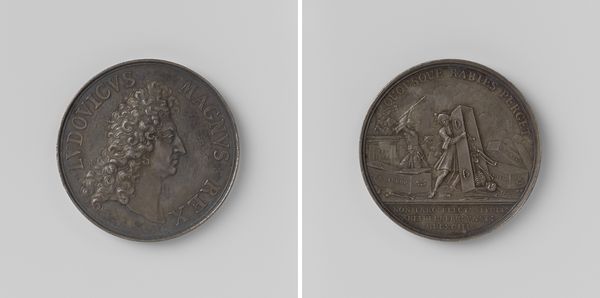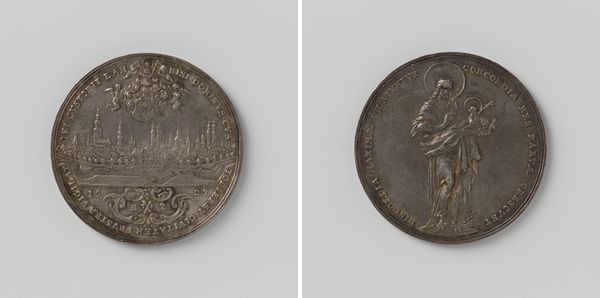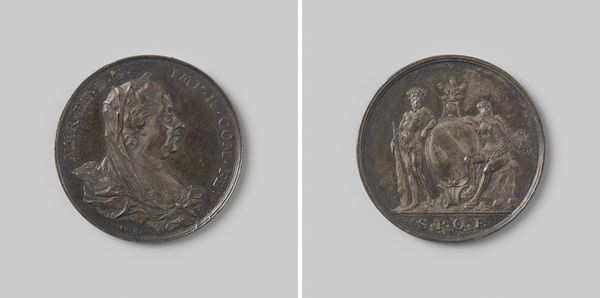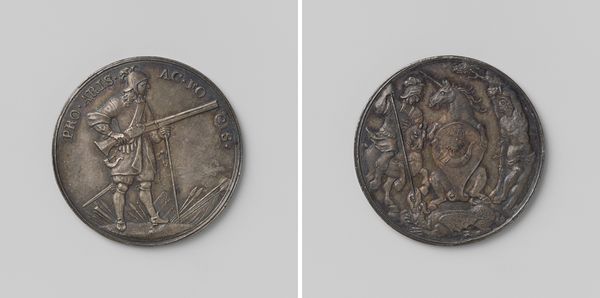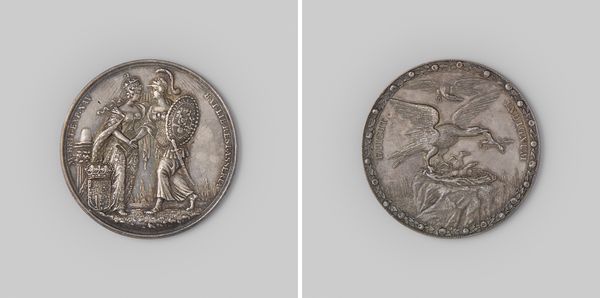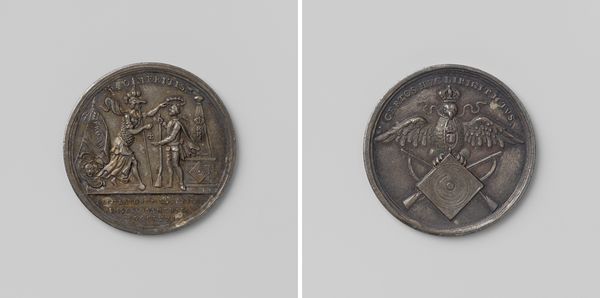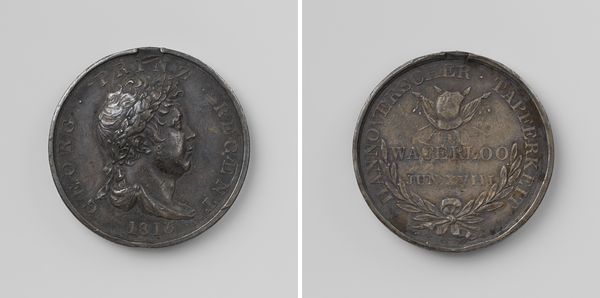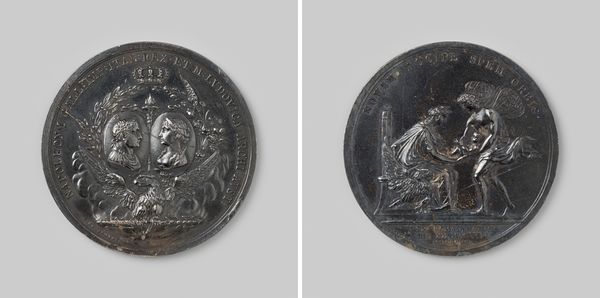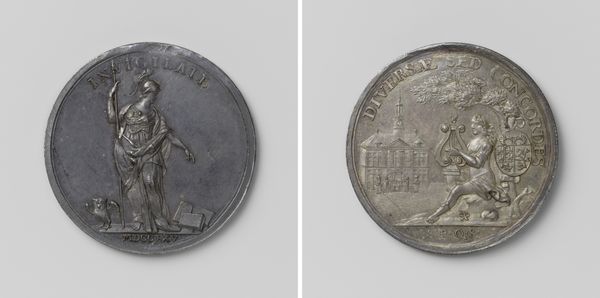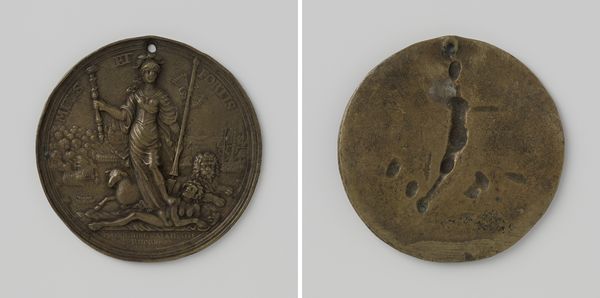
metal, relief, sculpture
#
portrait
#
neoclacissism
#
metal
#
sculpture
#
relief
#
sculptural image
#
sculpture
#
history-painting
Dimensions: diameter 2.6 cm, weight 7.96 gr
Copyright: Rijks Museum: Open Domain
Editor: Here we have Jean-Pierre Droz's metal relief, "Huwelijk van Napoleon met Maria-Louisa van Oostenrijk 1810," which translates to "The Marriage of Napoleon to Maria-Louisa of Austria, 1810." It seems to be a neoclassical commemorative piece, and there's a certain coldness to the figures despite depicting such an intimate act. What do you see in this piece? Curator: Well, this isn't just a depiction of a wedding; it's a powerful statement about political alliances and the strategic use of marriage in empire-building. Look at the Neoclassical style; it's all about projecting an image of stability, order, and legitimacy, echoing the Roman Empire. Doesn't it strike you how Marie-Louise, an Austrian Archduchess, essentially became a pawn in Napoleon's game of European domination? It completely disregards agency. Editor: I didn't think about the style as intentionally reinforcing those ideas. Do you think the artist, Droz, was trying to critique Napoleon, or was he complicit in creating propaganda? Curator: It's complicated. Artists of the time were often in tricky positions, navigating patronage and political pressures. While the medal might seem like straightforward glorification, we can also see it as a commentary on the transactional nature of power and marriage. The lack of emotion you picked up on might subtly reflect the forced nature of the union and the limited role afforded to women in dynastic power. Where does the power really reside here, in the individual or the state? Editor: That’s a really interesting point. It's definitely made me rethink how I initially viewed the piece. Curator: Exactly! Art often acts as a mirror, reflecting both the dominant ideologies and the undercurrents of resistance and critique present in any era. It's important that we keep thinking of what those reflect. Editor: Thanks! It’s definitely given me a lot to consider when looking at similar works in the future.
Comments
No comments
Be the first to comment and join the conversation on the ultimate creative platform.
